The editors at Cover Crop Strategies surveyed readers about the types of cover crop seeders they use on their farms and requested pictures and descriptions of their equipment. From standard air seeders to modified versions of classic seed drills all the way to horse and buggy, here are some of the most unique and thought-provoking responses.
“We use a John Deere 1790 31 by 15 inch planter with SeedRight seed discs for small grains. This gives us the chance to plant next year's corn between the cereal rye rows. We also have excellent population control, dropping around 40-45 pounds of seed per acre.”— Jeff Samuelson, Rose Valley Farm, Tipton, Iowa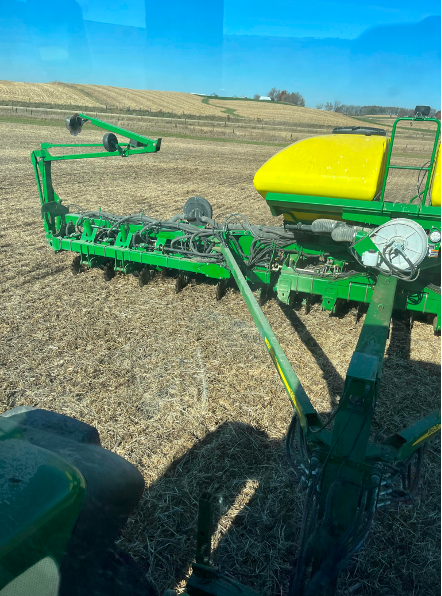
“We used a standard air seeder with no modifications. We seeded right after we harvested. The unit is a double shoot, so we can put the bigger seed through the fertilizer opener to get it in a little deeper.” — Fred Niehoff, Timik Farms, Alberta, Canada
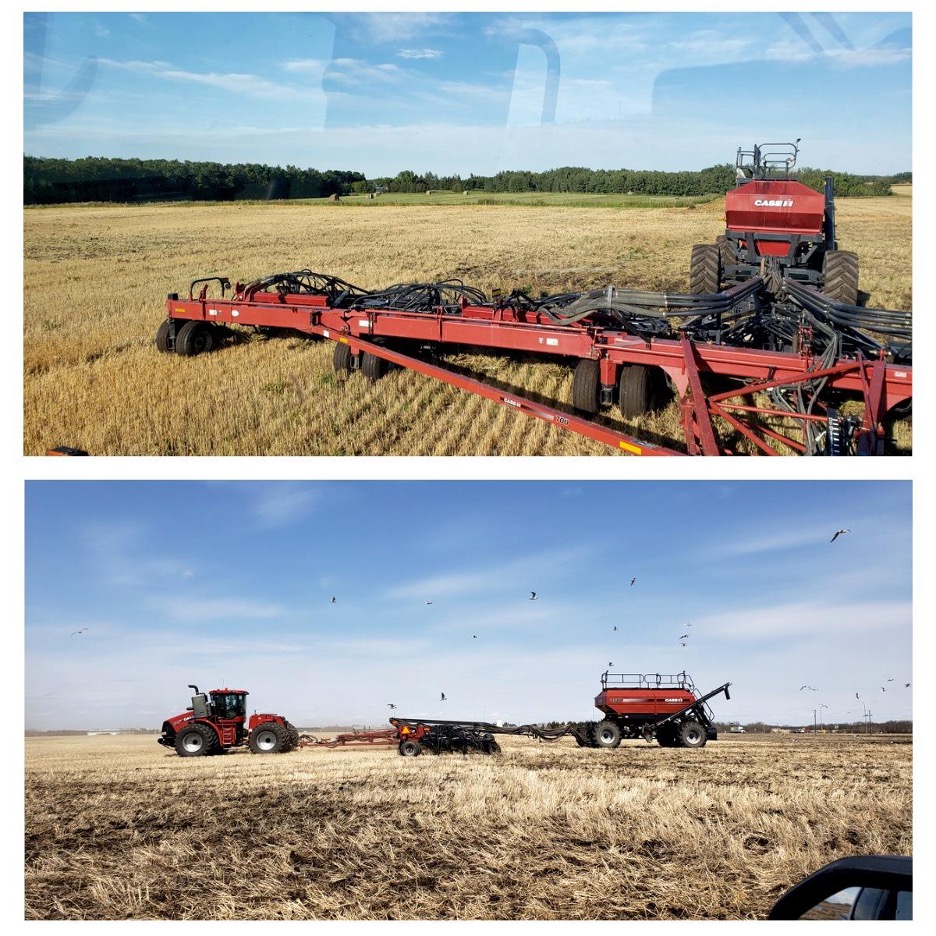
“This probably is not what you had in mind for a cover crop seeding rig. We use this old pull-type rotary hoe to incorporate broadcast cover crop seed. We often precede the rotary hoe with a spring tooth harrow, which was the case in this photo, planting a cover crop cocktail after no-till garlic. This combination seems to do a good job of incorporating the seed while keeping most of the residue near the soil surface and loosening the ground for good water infiltration.” — Eric Nordell, Beech Grove Farm, Trout Run, Pa.
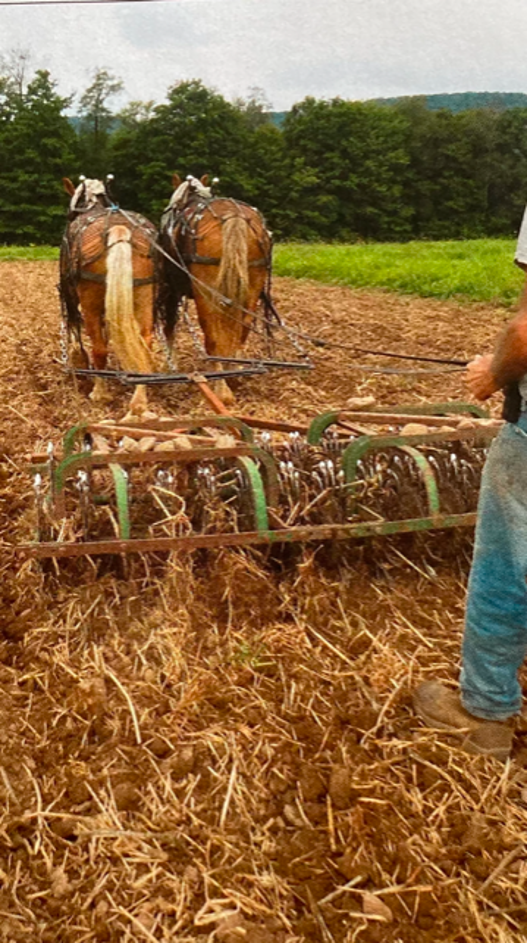
“We started planting cover crops when there wasn't much information out there. We were doing things that just didn't turn out the way we wanted. Spreading seed with the air flow was a mistake. Then using the airplane was an even bigger mistake. We decided we had to buy a drill, and that worked very well. Then we graduated up to a bigger drill. The most important thing with cover crops is you have to make them a priority, just like your cash crops. We try to follow the combine as closely as we can. If we get behind in seeding the cover crop, the combine will sit, and we will do our seeding. That's what makes it successful.” — David Oberbroeckling, Davenport, Iowa
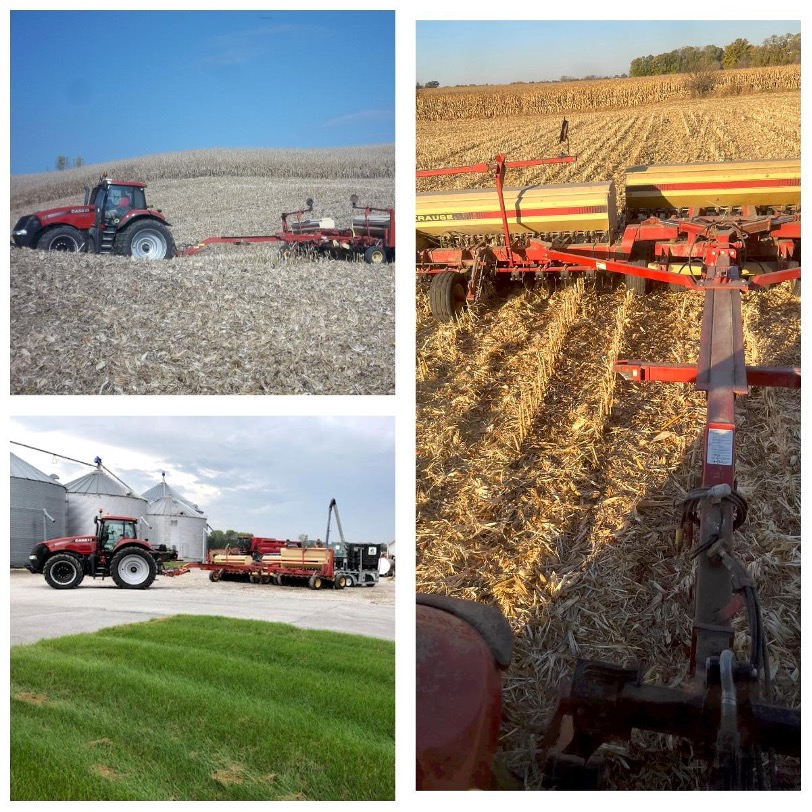
“We have been using cover crops for 30+ years, and our approach has always been to keep it as simple and cost effective as possible. We stopped growing corn after getting out of the cattle business in the mid ’90s, which allowed us to include a summer/fall planted crop every year. We follow soybeans and canola with winter wheat, and all our wheat acres are frost seeded to red clover with a simple 3-PH spinner. After harvest, all the wheat acres are seeded to a mix of cereal rye and oats at 40 pounds per acre. If we see areas where the clover didn’t catch, we will include forage peas in the mix. All fall-seeded cover crops are seeded with the same Krause Pro no-till drill that we use for beans, wheat and canola. We have been 100% no-till since 2016, and before that we were 100% spring minimum-till since 1993. None of our farms have had any fall tillage since 1993.”— Alan Lyons, Lyhaven Farms, Ontario, Canada
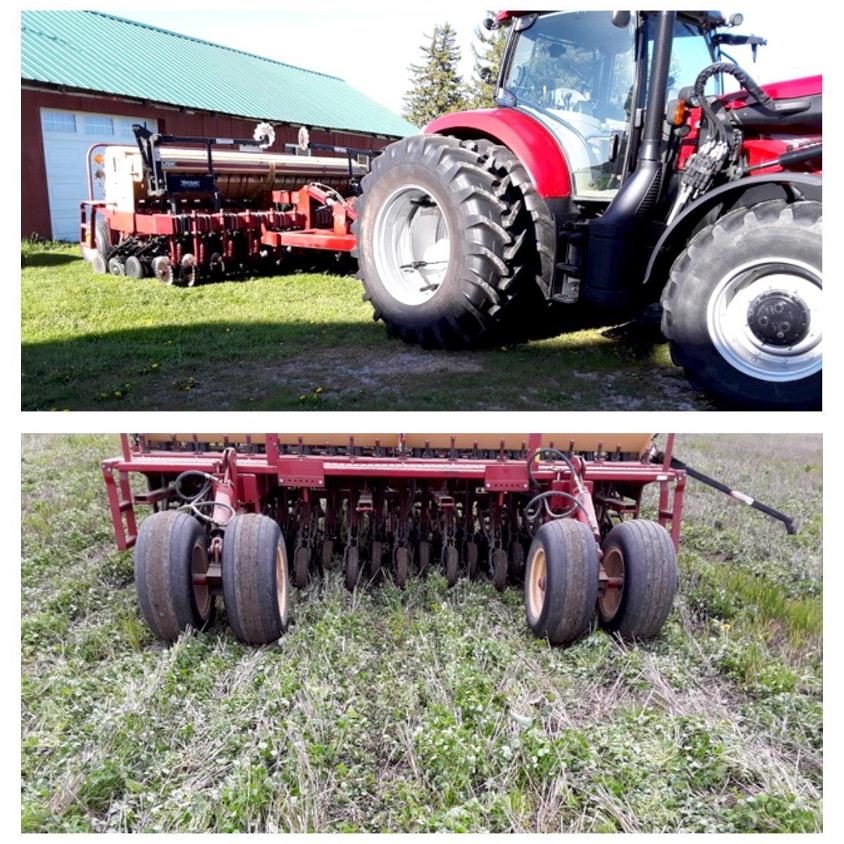
“We use a Cross Slot drill for our seeding. We chose Cross Slot because it does such a good job with seed and fertilizer placement and the disturbance is virtually non-existent. It is designed for 10,000 hours of operation, which will be about 100 years at our current rate of use. In 12 years, the only thing we have replaced is a new set of blades. It is 20 feet wide with 9.5 inch spacing, so we put large seed and fertilizer tanks on it to be able to work longer between fills. The seed and fertilizer tanks hold about 4 tons of fertilizer and 3-3.5 tons of seed. In Alaska, we can't plant cover crops after harvest, so we plant them in our fallow year. We use a Steiger Panther to pull it. Because it is an older tractor, the hydraulic system was not suitable for running the fan, so we installed a small diesel motor on the drill to power the fan. The cost to upgrade the hydraulic system on the tractor would have been the same price as the motor set up, but using the motor to drive the fan gives us the option to use a different tractor in an emergency. That worked for us once when we lost the hydraulic pump on the Steiger during planting. We switched tractors and kept planting while we waited for parts.
“The Cross Slot drill uses a downforce monitor to adjust the opener down pressure over changing field conditions so seed placement is precise across the field. Another monitor tracks fan speed and product flow through each seed and fertilizer tube. We use a Trimble guidance system for the tractor because when drilling into stubble, it is impossible to follow the last pass.” — Bryce Wrigley, Wrigley Farms, Delta Junction, Alaska.
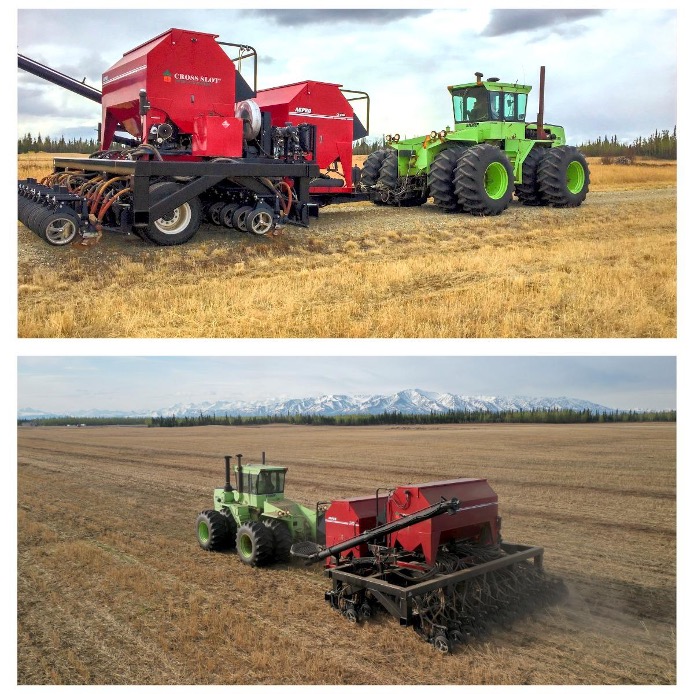
“We use our no-till drill to plant winter wheat into 260-bushel corn residue. We follow the combine with the drill within a day or 2 of harvest all the way into December if harvest goes that late. We furrow irrigate so we are planting on top of the beds, and we leave a 10-inch gap for the water furrow. With nothing growing down the furrow, it is much easier for the irrigation water to flow the full length of the field. This custom-built Esch 3015 no-till drill has 4 units at 5.25-inch spacing and then a 10-inch gap for irrigation furrow on 30-inch center for a total of 24 units planting six 30-inch beds. On the front of the drill, we have an independent hydraulic controlled toolbar with furrow runner row cleaners on 30-inch centers to clean our furrows so we are making one pass to plant and maintain our irrigation furrows. We will graze cattle on the corn stalks this winter, then harvest wheat for grain next July and then follow with a 17-way cover crop mix.” — Lowell King, Fruita, Colo.
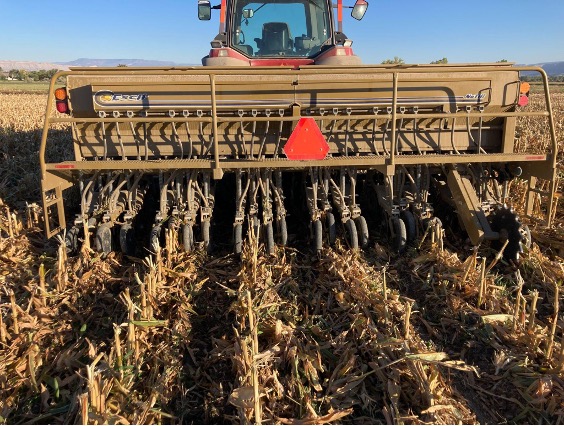
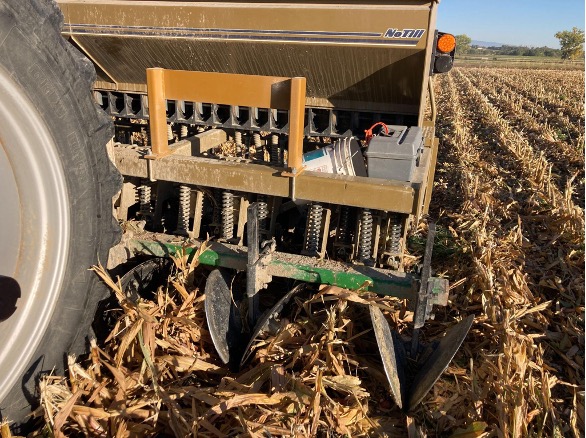
“I use a Weaving, as this is a specialist direct drill for no-tillers. It works well, but like all farming operations, it is important to be patient to wait for the right conditions. We are pleased with the drill and the switch to no cultivations, which is working well so far. An important gain is that we have more time to do the job right as we are not under pressure to get on with cultivations and thus damage your soils by cultivating in poor conditions.” — Jamie Rankin, Little Hall Farms, Rochford, Essex, England
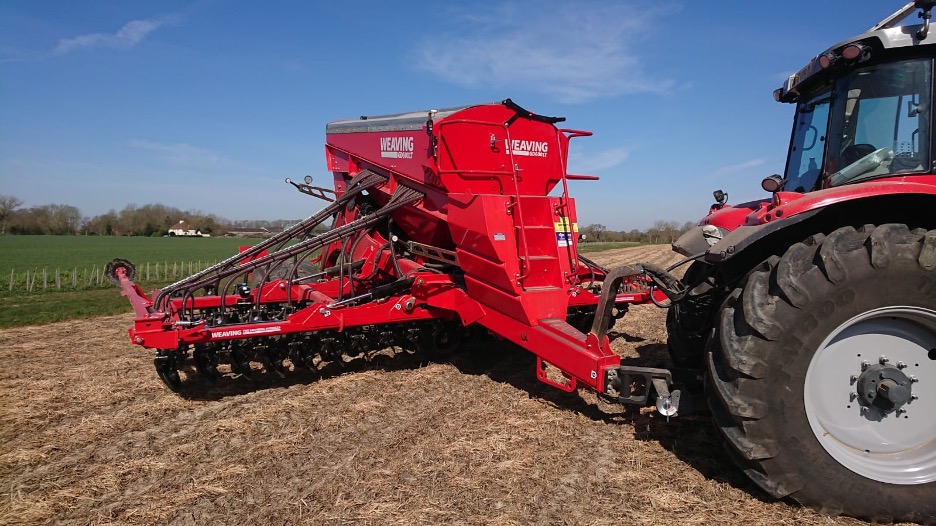
“Our cropping system at Pleasant Hill Farm in Nova Scotia, Canada, may be quite different from what you usually see. We are a certified organic vegetable farm working sloping, highly erodible sandy loam soils. As a soil conservation measure, the farm is laid out in 4-foot wide by 80-foot long permanent beds that run across the slope. Between each bed is a 2-foot wide permanent sod pathway. The tractor straddles the beds, so all wheel and foot traffic happens in these sod paths, which also serve as a barrier to water runoff, since they're laid out across the slope. Because we don't want to disturb these sod paths, all of our machinery is 4' wide to fit the beds. This includes the no-till drill we use for seeding cover crops. There isn't a big selection available of no-till drills that are so narrow, but ours was built by Kasco Mfg. in Shelbyville, Ind., and it works well. The only thing I'd change if I could would be to decrease the row spacing from 9 inches to 7 inches, just to give better ground coverage when the cover crop is small.” — David Blanchard, Pleasant Hill Farm, Nova Scotia, Canada
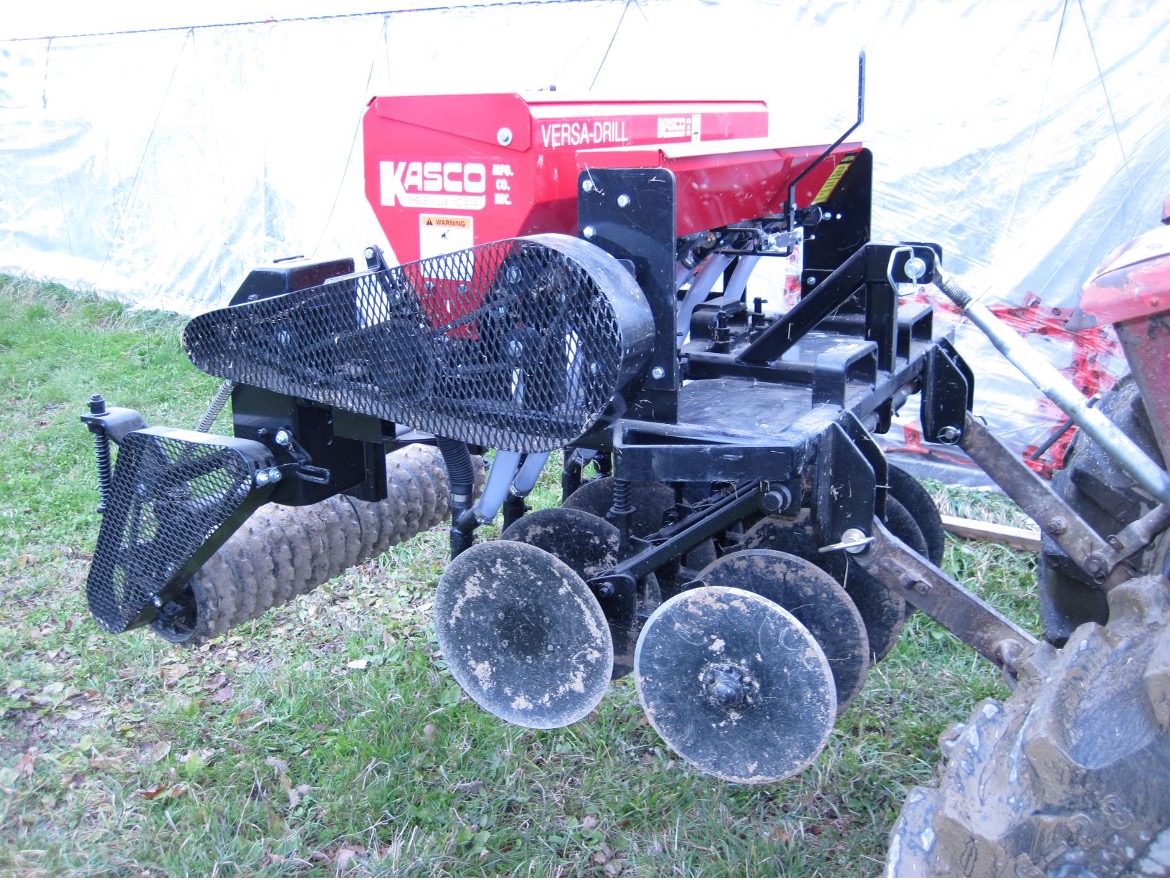
“We use a 2-compartment Flexi-Coil 1330 with a 20-foot toolbar with Sunflower openers at 7.5-inch spacing. We use 4 towers for the 32 openers (20-foot or 8 30 inch rows wide). We can arrange the opener hoses to plant twin rows of a cereal. In that case, we would plant corn the next spring in between the twin rows of the cereal. After a spring cereal or processing peas if we can plant around Aug. 15-20, we will use the twin row arrangement and add 2 more towers and hoses to plant a mixture of radish and mustard seed. We need to plant by those dates to give the radish enough time to grow to 6-8 inches. In this case, we will use the two tanks on the Flexi-Coil. The radish and mustard are gone in the spring so we can plant corn there.” — John Rember, Ormstown, Quebec, Canada
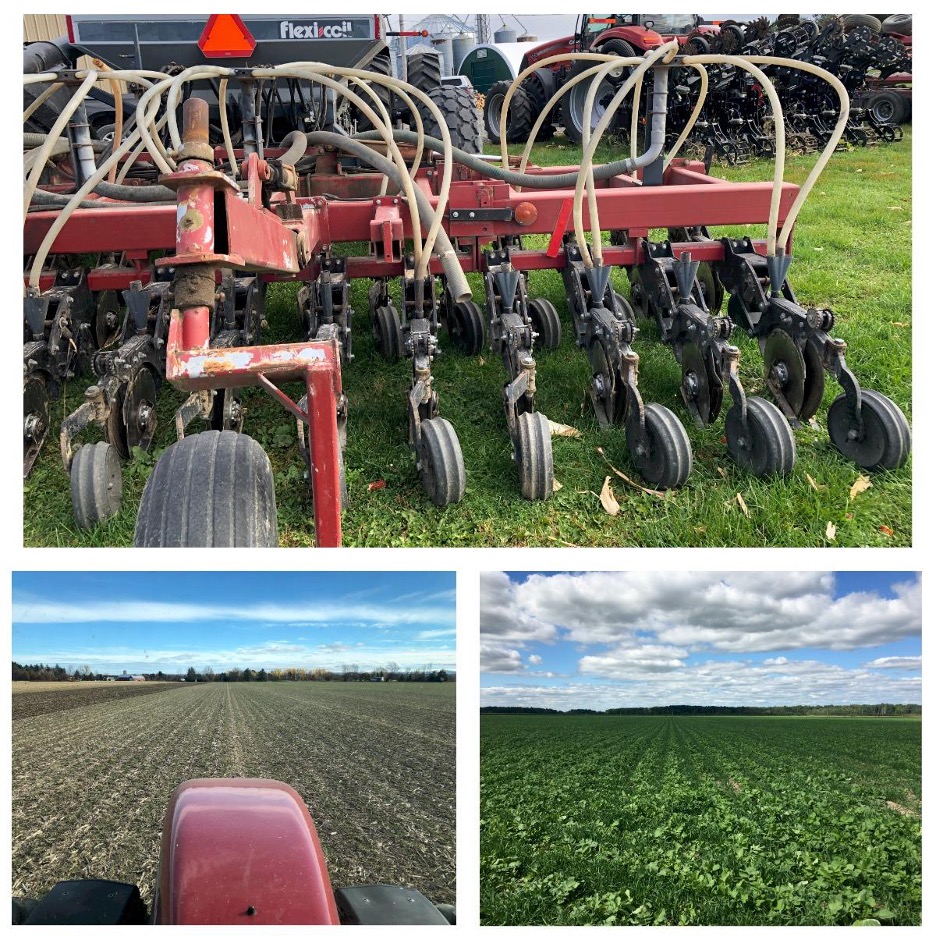
"This season I moved my seeder to the front loader and did a very shallow till and compaction behind it with a Väderstad Carrier with crosscutter discs and a rubber roller. The carrier is only 3 m wide so I put the spreaders very close and got a very nice distribution without streaks. It's a low budget build of wood, but it does the job." — Torbjörn Reidarsson, Mantorp, Sweden
"We use a 9m Sumo DTS strip-till drill for cover crop seeding, or sometimes a 8m Horsch Avatar or 6m Horsch Pronto. These give us the option of a tine, double disc and single disc openers. We can seed into high residue levels with the disc drills, or do some soil restructuring with the tine opener. The tine allows us to run in wet conditions on heavy clay land without smearing the seed zone. The Pronto has front working discs that we have changed for more aggressive but shallower crimped discs. We seed 2500ac of cash and cover crops a year." — Simon King, Lincolnshire, England
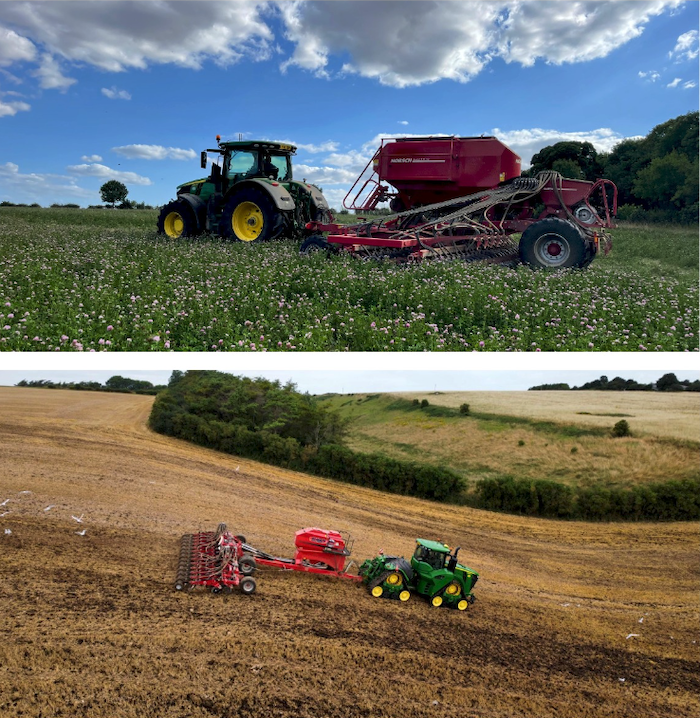
"Currently I use this Frontier pendulum spreader which spreads CR 43’. It holds about 20 bushel and I usually spread about 50 pounds per acre. I can do about 30 acres an hour. I can get this spread on behind the combine and turbo-till it in if conditions are dry and we have enough time in the fall. If I don’t get it tilled in, then at least it is on and will grow in the spring for sure. We have also used a stock chopper behind the spreader for good results. We put all of our ground going to soybeans in cereal rye last year and this year. Planted soybeans green into cereal rye last year for the first time and will do it again next year. We are located in southeast Iowa." — Brett Birchmier, Birchmier Farms, Bloomfield, Iowa
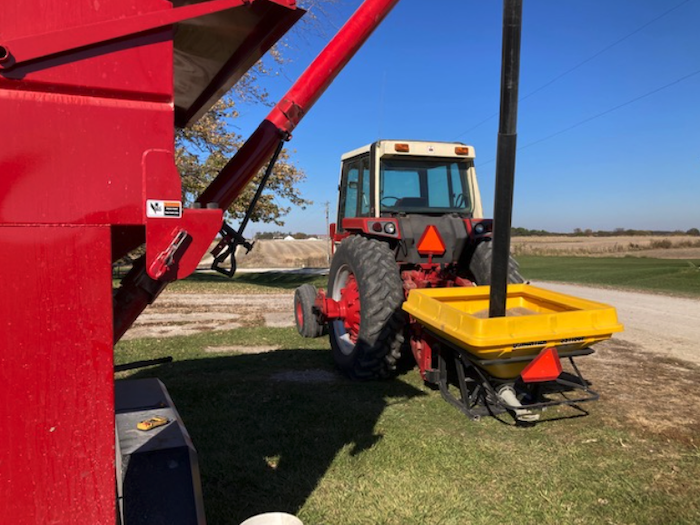
"Last season I used an air seeder on an inter row cultivator. It worked but not as well as I wanted it to so I ordered a Piket inter row planter. I haven’t received it nor worked with it, so I’m including photos off their website. It’s the best intercrop planter in South Africa." — Jannie Keet, Potchefstroom, South Africa
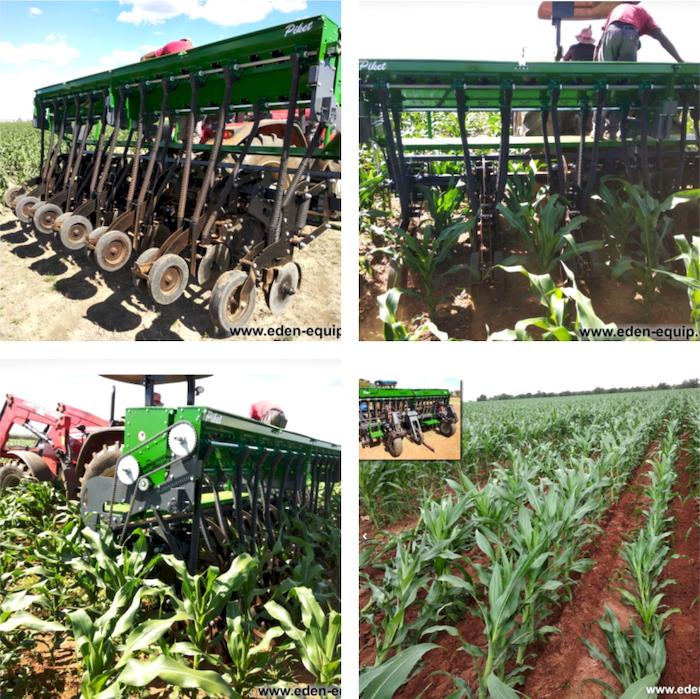
"We have 2 rigs. One is a regular JD 1890 CCS air drill. We use this to seed winter wheat, soy, buckwheat for grain and any covers going into cereal or buckwheat stubble. The mix we plant behind winter wheat is usually a 12-14 way mix, including cereals, brassicas and legumes. Behind buckwheat, since the season is farther along, the mix is a little simpler since there is not enough growing season left to get growth out of some of the warm weather species. The following spring, we will plant green into whatever makes it through the winter.
"The other rig is our corn interseeder, side dresser. It is an HFL (Hendriks Fabricating Limited) toolbar running Salford openers, 2 per row, and the UAN is applied, Y drop style thru side tubes, one on each drill opener. This rig was a prototype and since then HFL has started building their own opener. We had tried, in years past, to broadcast the cover crop seed in the corn, but had no success because the residue mat prevented seed contact to the soil. So we bought this rig, which slices nicely through the residue and we get excellent seed to soil contact. The mix in the corn is certified Italian ryegrass, a couple legumes and a couple brassicas." — Larry Dyck, Campden, Ont.
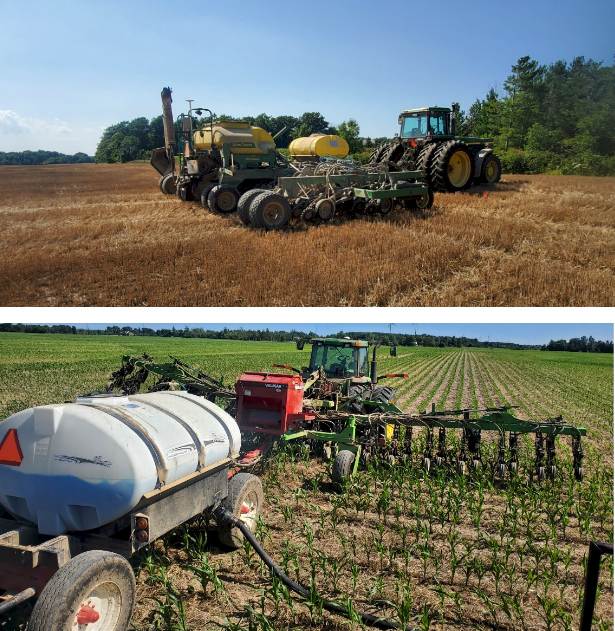
"I use a PS120 MI from APV with a toolbar attached to a steel frame and the monitoring system attached to the tractor. We use it for surface broadcasting cover crop seeds to corn fields at corn 6-7 leaf stage. Two air seeder outlets per row and 3 wavy coulters follow to mix the seeds with the soil. In earlier years, we broadcasted cover crop seeds on the soil surface, with no seed incorporation during the growth of crops, generally resulting in poor germination. Later we installed coulters between rows behind the seeder outlets and improved cover crop germination greatly." — Xueming Yang, Ont. Canada
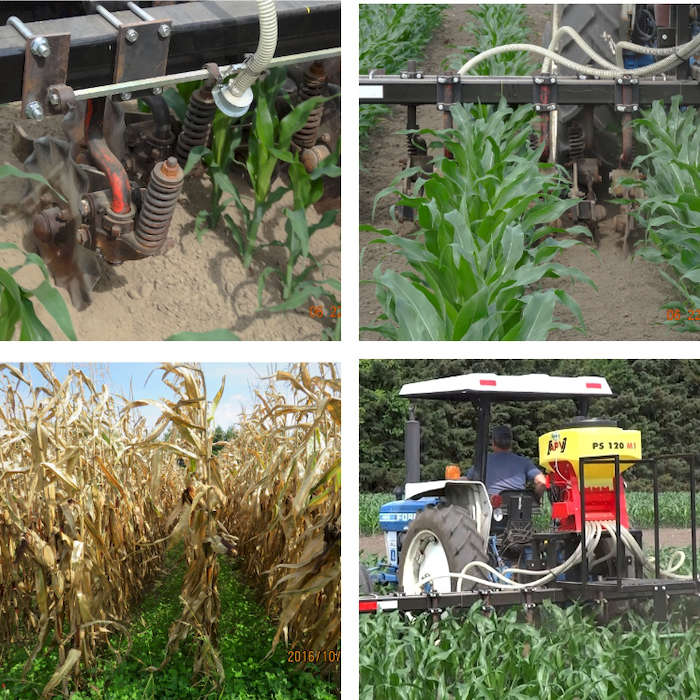
"Typically, we use a Sky Easydrill. It’s a no-till drill, and works well with very little technical issues." — Raphael Vogel, Hunenberg, Switzerland
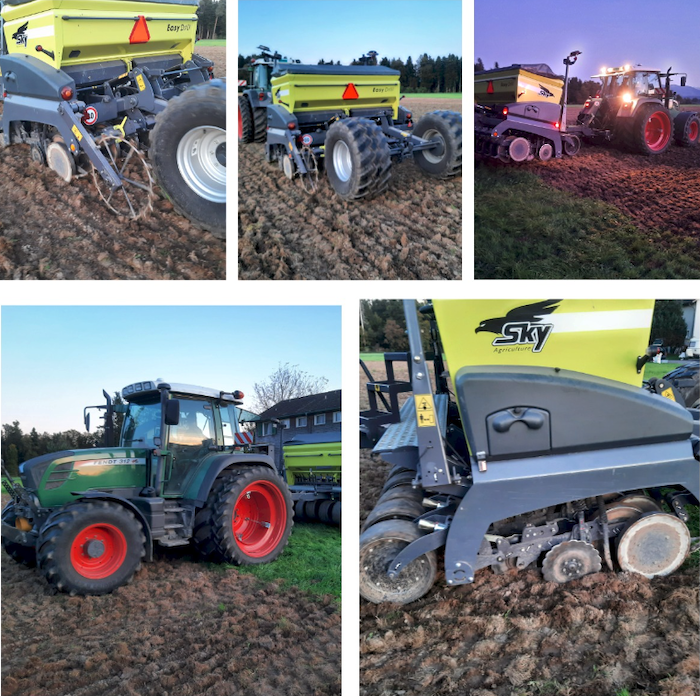
"My highboy is constructed from a Valmar air seeder attached to a seed corn cutter. The rig features a 16-row folding boom with hoses to interseed." — Jeff Olson, Winfield, Iowa
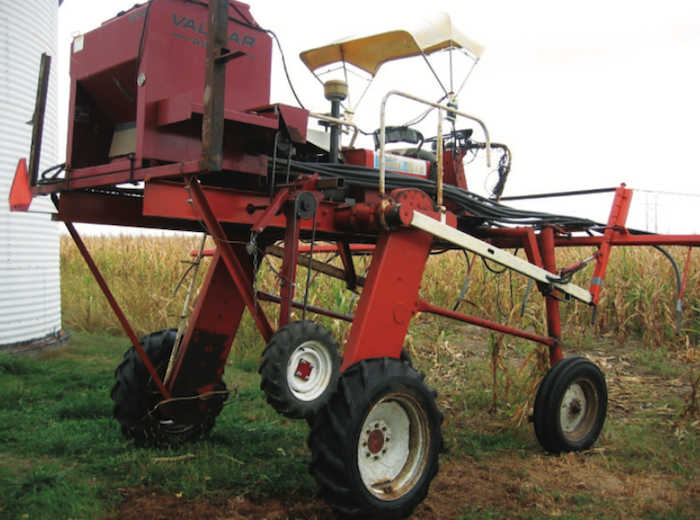

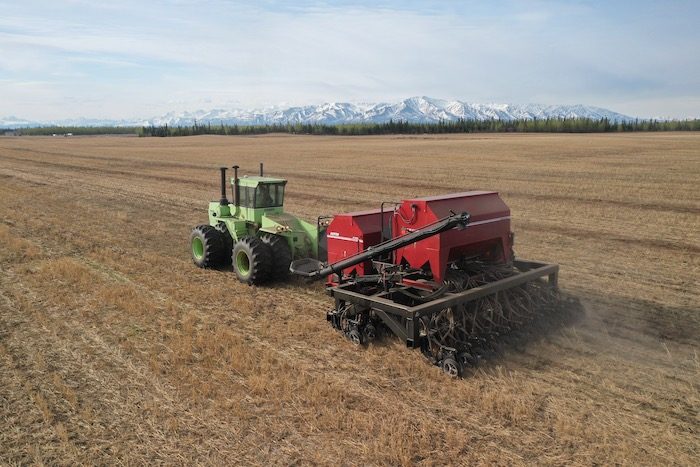



Post a comment
Report Abusive Comment